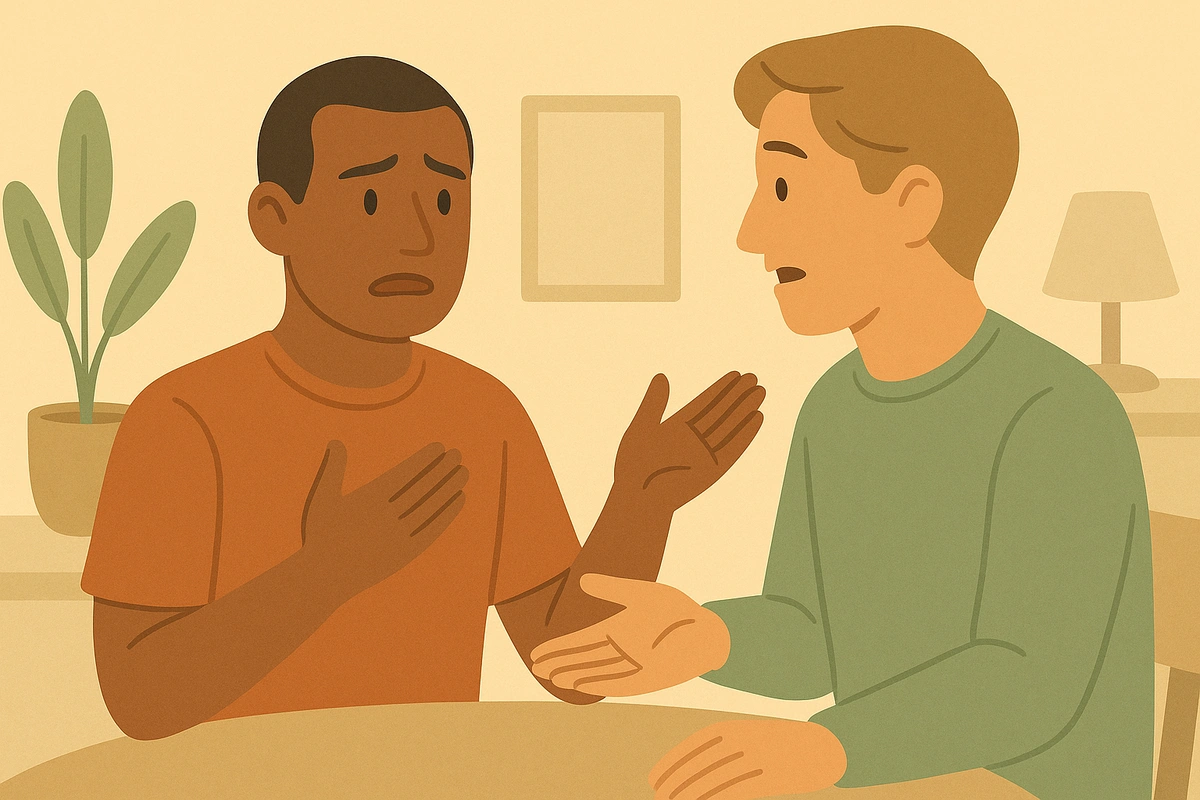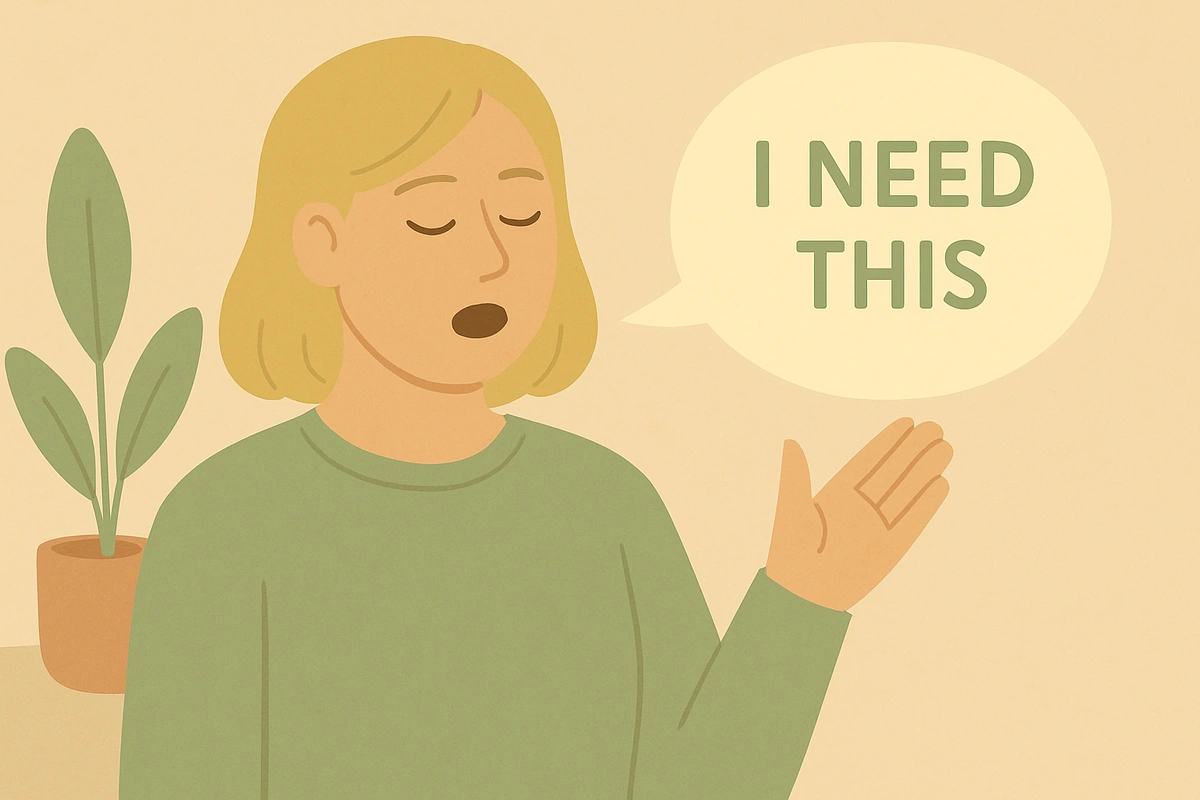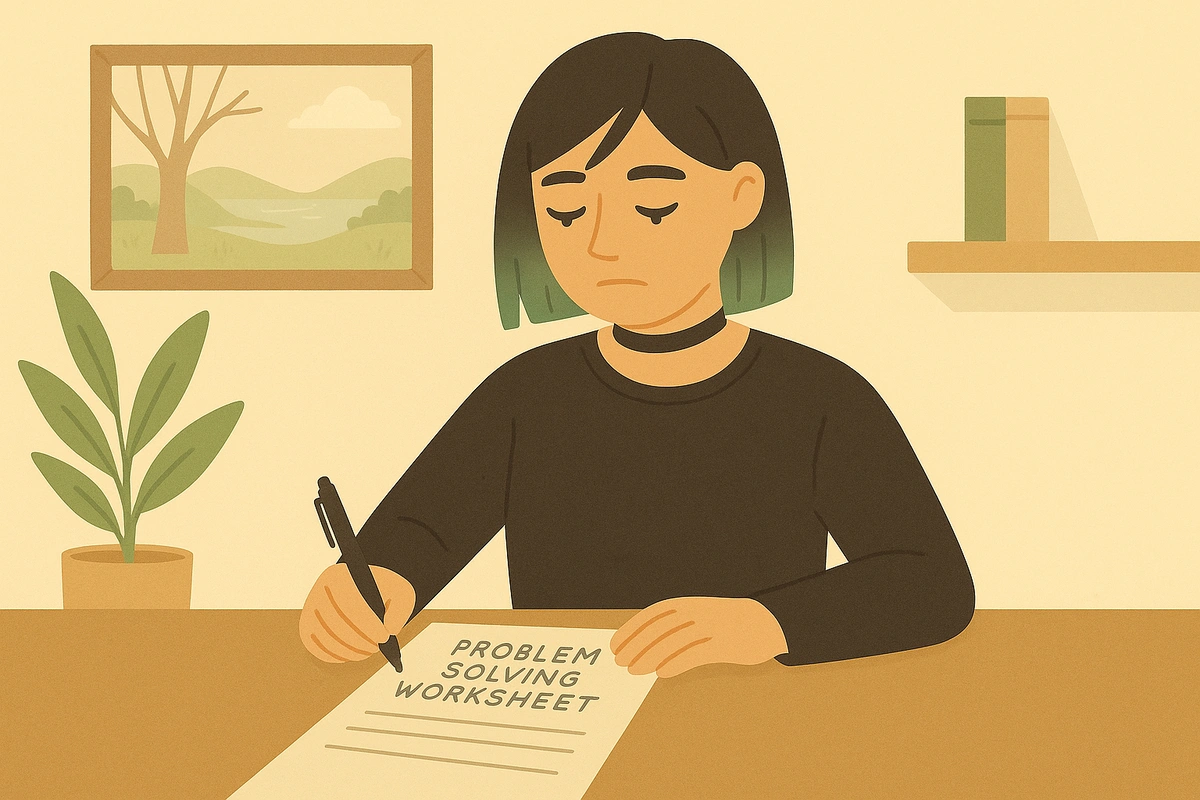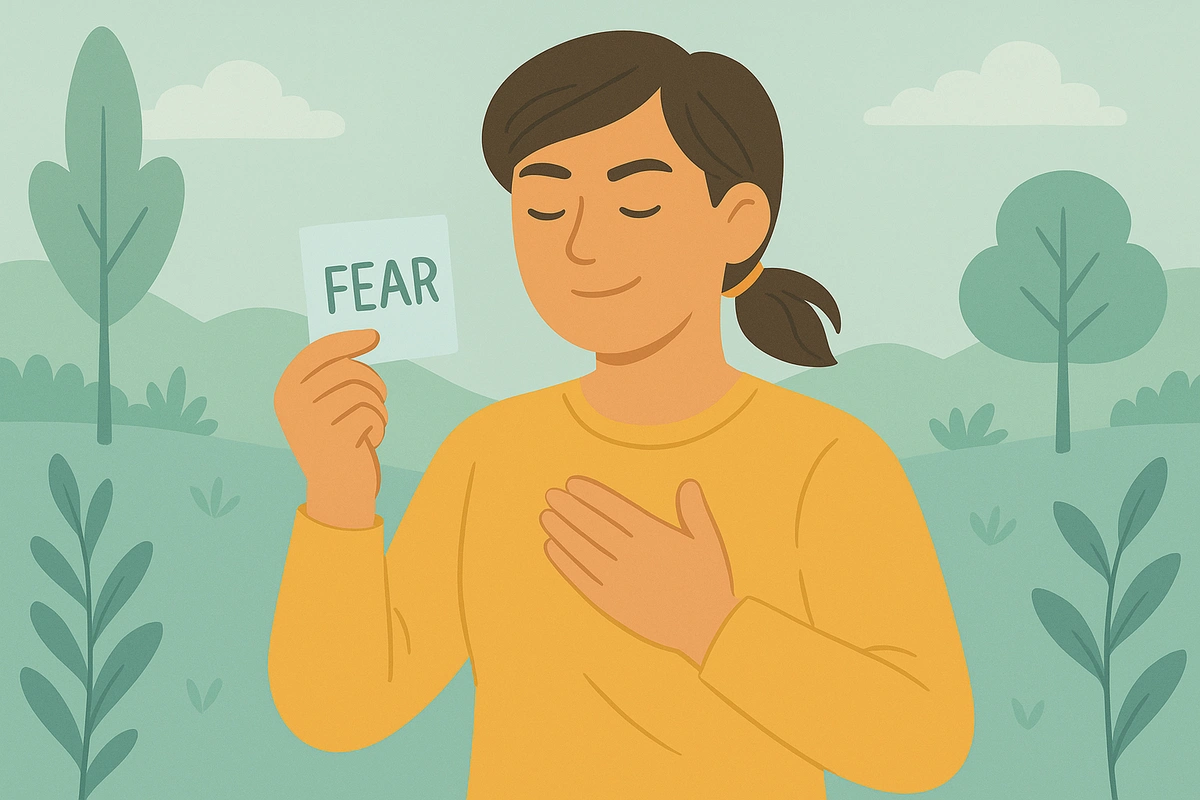
Practicing asking for support involves creating and rehearsing clear, specific scripts that help you communicate your needs effectively during times of emotional distress or practical challenge. This structured approach builds confidence in reaching out while reducing the uncertainty and anxiety that often prevent people from seeking help when they need it most.
Many people struggle with asking for help, not because support isn't available, but because they don't know how to ask for it clearly or feel too anxious to try. Research shows that people consistently underestimate others' willingness to help, while simultaneously overestimating how burdensome their requests feel to others. Scripted practice bridges this gap by providing concrete tools that make support-seeking feel more manageable and less emotionally risky.

Assertive communication is like finding the perfect balance on a seesaw - it requires expressing your thoughts and feelings directly while maintaining respect for others. Think of it as your communication sweet spot, sitting perfectly between being too passive (like a doormat) and too aggressive (like a bulldozer).
When you practice assertive communication, you're essentially training your brain's social navigation system to operate more effectively. Your mind has built-in patterns for how to interact with others, and these patterns often default to either avoiding conflict entirely or becoming overly forceful when stressed. Assertive communication creates a third option - a calm, confident middle ground where you can speak your truth without attacking or retreating.

Asking for space in a relationship means seeking personal time to focus on individual interests, hobbies, or self-reflection. This practice is like giving your emotional system a chance to reset and recharge, similar to how your phone needs regular charging to function optimally. When you request space thoughtfully, you're not pushing your partner away - you're creating room for both of you to breathe and return to the relationship with renewed energy and perspective.
Think of healthy relationships as having a natural rhythm between togetherness and apartness, like breathing in and breathing out. When couples spend every moment together, they can lose their individual identities and the very qualities that attracted them to each other in the first place. Research shows that individuals benefit positively when they actively choose time alone and it's used for regulation of emotions, self-reflection, relaxation, or creative pursuits.

Worry postponement involves deliberately delaying worries to a specific, pre-scheduled time each day, reducing their immediate impact on your thoughts and emotions. Think of your mind like a computer with too many programs running at once - when worry constantly operates in the background, it slows down everything else. This technique is like scheduling worry to run during specific maintenance hours, freeing up your mental processing power for the activities that matter most.
The practice works by recognizing that most worry serves no immediate purpose in the moment it arises. Your brain evolved to worry as a survival mechanism, but in our modern world where immediate physical threats are rare, worry often becomes a mental habit that creates problems rather than solving them. Telling someone to stop worrying doesn't help, but postponing it to a designated time allows you to honor the worry while reclaiming control over when and how long you engage with it.

This practical anxiety management technique involves deliberately examining the worst, best, and most realistic possible outcomes of a stressful situation. By systematically evaluating all three scenarios, you challenge your brain's natural tendency toward catastrophic thinking and develop a more balanced, evidence-based perspective on future events.
Anxiety often hijacks rational thinking by making your brain focus exclusively on worst-case scenarios. An estimated 4% of the global population currently experience an anxiety disorder, and catastrophic thinking patterns contribute significantly to this distress. When you're caught in worry spirals, your mind operates like a broken record player stuck on the most frightening track. This technique acts like your brain's reset button, helping you step back from emotional overwhelm and engage your logical thinking centers to assess situations more accurately.
Thought tracking, also called thought logging or thought monitoring, is the practice of regularly writing down your anxious, distressing, or negative thoughts as they occur throughout the day. This foundational cognitive behavioral therapy technique helps you become aware of automatic thinking patterns that often operate below the level of conscious awareness, influencing your emotions and behaviors in powerful ways.
Think of your thoughts like background music in a store - they're constantly playing, shaping your mood and reactions, but you rarely pay direct attention to them. Thought tracking turns up the volume on these mental patterns, allowing you to examine whether your thinking habits are helping or hindering your emotional wellbeing. Research shows that simply becoming aware of negative thought patterns can reduce their emotional impact by up to 25%, making this one of the most accessible and effective tools for mental health self-care.

Problem-solving worksheets provide a systematic framework for tackling life's challenges using proven cognitive-behavioral techniques. Instead of letting problems swirl around in your mind creating anxiety and overwhelm, this tool guides you through a step-by-step process that clarifies what you're actually dealing with, generates realistic solutions, and creates actionable plans you can implement immediately.
Think of your anxious mind like a cluttered desk where important papers are buried under piles of random items. When problems feel overwhelming, it's often because multiple concerns, emotions, and potential solutions are jumbled together without clear organization. A problem-solving worksheet acts like a filing system for your thoughts, separating genuine problems from worry spirals, organizing potential solutions by practicality, and creating clear next steps that restore your sense of control and capability.
Research shows that structured problem-solving techniques significantly reduce anxiety and depression while building long-term resilience and confidence.

Cognitive distortions are like mental tricks your brain plays on you - automatic thought patterns that twist reality in negative ways, making situations seem worse than they actually are. Think of them as faulty filters that color your perception, similar to how a dirty camera lens makes everything look blurry or dark.
Your brain naturally tries to make sense of complex situations by taking mental shortcuts, but sometimes these shortcuts lead you astray. When you're stressed, anxious, or depressed, your mind becomes more likely to jump to worst-case scenarios, see everything in black and white, or blame yourself for things beyond your control. Learning to spot these distorted thoughts is like becoming a detective of your own mind - once you can identify the culprits, you can challenge them and develop more accurate, balanced thinking patterns that support your mental health.

Think of your emotions like smoke alarms in your brain - they're designed to alert you to potential threats, but sometimes they go off even when there's no real danger. When you're caught in the grip of intense fear, anxiety, or overwhelming emotions, your brain's alarm system can take over completely, leaving you feeling helpless and out of control.
The "name it to tame it" technique works like having a conversation with that overactive alarm system. When you put a specific label on what you're feeling - saying "I'm experiencing anxiety" rather than being trapped inside undefined emotional chaos - you activate your brain's rational thinking centers. This simple act of naming creates psychological distance between you and the emotion, transforming you from someone drowning in fear into an observer who can see the fear clearly. Research shows that this verbal labeling literally changes what's happening in your brain, reducing activity in emotional centers while strengthening the areas responsible for clear thinking and self-control.

Think of facing your fears like learning to swim in deep water - you wouldn't jump straight into the ocean if you've never been in a pool. A fear ladder works the same way, creating a series of increasingly challenging steps that help you build courage and skills gradually. Instead of overwhelming yourself by facing your biggest fear all at once, you start with situations that cause only mild anxiety and work your way up.
Your brain learns through experience, and right now it has learned that certain situations or objects are dangerous even when they're not actually harmful. Every time you avoid something you're afraid of, you accidentally teach your brain that the fear was justified. The fear ladder helps you teach your brain new, more accurate information by providing evidence that these situations are actually safe. As you successfully complete each step without anything terrible happening, your anxiety naturally decreases, and your confidence grows. This process, called systematic desensitization, has helped millions of people overcome fears that once controlled their lives.